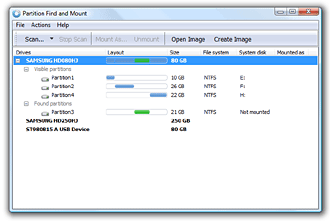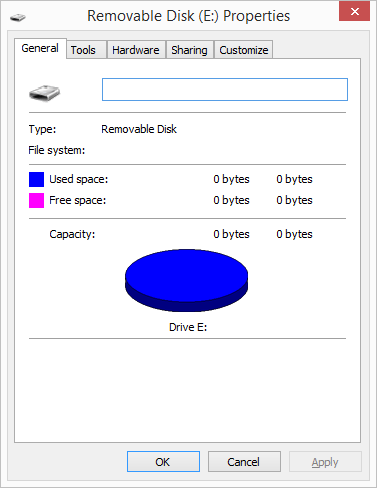
- #PARTITION FIND AND MOUNT DISK SIZE IS WRONG HOW TO#
- #PARTITION FIND AND MOUNT DISK SIZE IS WRONG SOFTWARE#
- #PARTITION FIND AND MOUNT DISK SIZE IS WRONG DOWNLOAD#
This File & Disk Management program is available in English.
#PARTITION FIND AND MOUNT DISK SIZE IS WRONG SOFTWARE#
If you have any questions or comments regarding the article, let us know.Partition Find and Mount is a free software published in the File & Disk Management list of programs, part of System Utilities. Finally, let’s mount the resized volume and check that our data is still here:Īs you can see, our test file is still here and the partition has a new size. Now the file system block size is the same as for partition configuration. Let’s fix the error using resize2fs and then check the filesystem again: This is due to shrinking the partition with no changes made to the file system metadata. Note the highlighted line - the tool shows that there is a mismatch in the file system configuration and current size. Now we need to verify consistency by running e2fsck: You can use the +G format to specify the desired partition size in Gigabytes (use “M” for Megabytes). You may use default values in most fdisk questions, but carefully check these highlighted on the picture above: first sector (starting point) and last sector.

Let’s run fdisk again and type “n” - creating the new one: In our example, the new partition will be a smaller size so the Shrink operation will be performed.

The following procedure is the same for both actions, but keep in mind that: Now delete this partition by typing “d” and then type “w” to save these modifications:Īfter the old partition is removed we need to create the new one, either a bigger or smaller size. Remember “Start” value (2048 in this example). The last line contains important info about the current partition size and its bounds: “Start” and “End”. Now run fdisk command with our test disk name as an argument and then type “p” to print the list: And don’t forget sudo to get appropriate permissions: We need to unmount the volume before modifications - just run the umount command, where mounting point is a file system’s representation of the device. I have created the file file_should_remain.test to check whether the partition did not lose its data You can check it using, for example, the lsblk tool (for block-level devices only):

If done carefully, you will not lose your data on the modified element, despite the frightening phrase "delete the partition". Then you need to simply modify the file system properties to fit the new bounds. The primary way of resizing drive partitions in Linux is to delete the old one and create a new one, using the previous starting sector (you can think about it like “left bound of the new partition”).
#PARTITION FIND AND MOUNT DISK SIZE IS WRONG DOWNLOAD#
Build an effective backup strategy for your Linux system: download our free Once data is deleted it cannot be undeleted. We will use only built-in tools and commands.īefore you begin with partitions, make sure you have a solid backup.
#PARTITION FIND AND MOUNT DISK SIZE IS WRONG HOW TO#
In this article, we will overview how to resize a partition in a Linux.


 0 kommentar(er)
0 kommentar(er)
